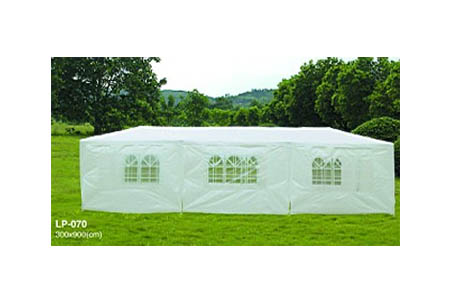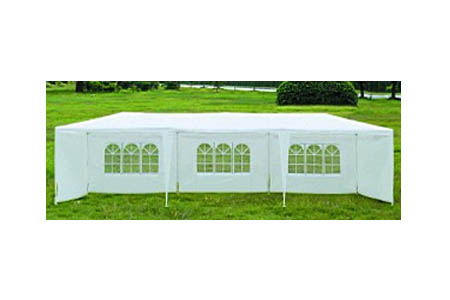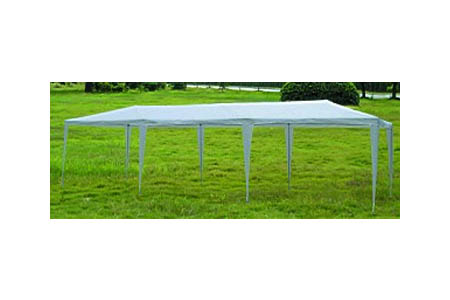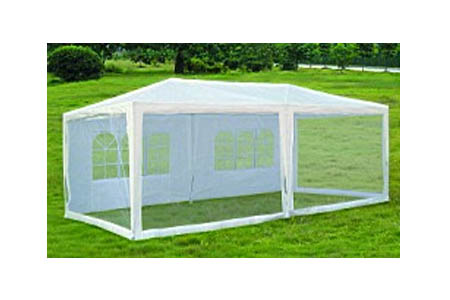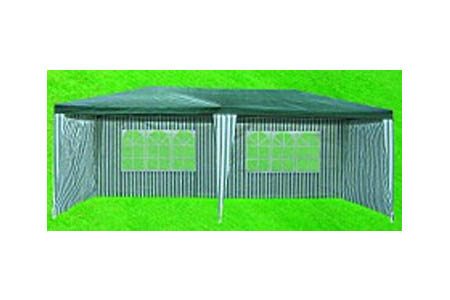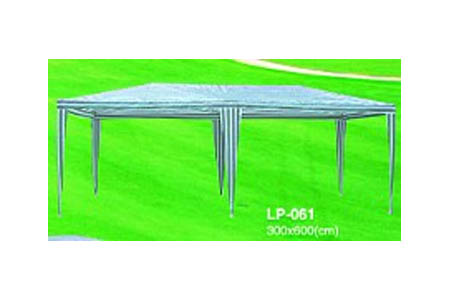Polyester gazebos are a popular choice for outdoor gatherings, providing shelter and enhancing the aesthetic appeal of gardens, patios, and public spaces. As the environmental impact of consumer products becomes a more pressing concern, it is crucial to examine whether polyester gazebos align with eco-friendly principles. This article explores the environmental impact of polyester gazebos from production to disposal, shedding light on both the benefits and drawbacks of this widely-used material.
The Production of Polyester Gazebos
Polyester is a synthetic fiber derived from petroleum, a non-renewable resource. The production of polyester involves a significant amount of energy and the release of greenhouse gases. Manufacturing polyester gazebos thus contributes to the depletion of fossil fuels and the increase of carbon emissions. Additionally, the chemical processes used in producing polyester can result in water pollution and the release of harmful substances into the environment.
Despite these concerns, there are advancements in the production of polyester gazebos that aim to reduce their environmental footprint. Some manufacturers are adopting more sustainable practices, such as using recycled polyester, which significantly lowers the demand for virgin petroleum. This recycled polyester is often sourced from post-consumer plastic bottles, diverting waste from landfills and reducing the environmental impact of polyester gazebos.
Durability and Longevity
One of the key advantages of polyester gazebos is their durability. Polyester is a strong and resilient material that can withstand various weather conditions, including rain, wind, and UV radiation. The longevity of polyester gazebos means they do not need to be replaced as frequently as those made from less durable materials. This extended lifespan can mitigate some of the environmental impact associated with their production.
However, the durability of polyester gazebos also poses a challenge when it comes to disposal. Polyester is not biodegradable, meaning that discarded polyester gazebos can persist in the environment for many years, contributing to landfill waste and potentially harming wildlife.
Recycling and Disposal
The end-of-life phase of polyester gazebos presents a critical point in evaluating their environmental impact. As previously mentioned, recycling polyester can significantly reduce its ecological footprint. Some manufacturers offer take-back programs, encouraging consumers to return their used polyester gazebos for recycling. These programs ensure that the materials are repurposed, reducing the demand for new raw materials and minimizing waste.
However, the recycling of polyester gazebos is not yet widespread, and many end up in landfills. When polyester gazebos are improperly disposed of, they can contribute to pollution and environmental degradation. Enhancing recycling infrastructure and consumer awareness is essential to improve the sustainability of polyester gazebos.
Comparative Environmental Impact
When assessing the environmental impact of polyester gazebos, it is important to compare them to alternatives. Gazebos made from natural materials like wood may seem more eco-friendly at a glance. However, the sourcing of wood can consequently deforestation and habitat destruction if not managed sustainably. Moreover, wooden gazebos often require chemical treatments to resist weather damage, which can introduce harmful substances into the environment.
Polyester gazebos, on the other hand, require fewer chemical treatments and can be produced using recycled materials, which helps conserve natural resources. Additionally, the lightweight nature of polyester gazebos means they require less energy for transportation, further reducing their carbon footprint.
Innovations and Future Directions
The environmental impact of polyester gazebos can be mitigated through technological advancements and innovative practices. Researchers are exploring the development of bio-based polyester, which would use renewable resources instead of petroleum. This could significantly reduce the carbon footprint of polyester gazebos and make them more sustainable.
Moreover, increasing the use of recycled polyester in the production of gazebos can help create a circular economy. By designing polyester gazebos with end-of-life considerations in mind, manufacturers can facilitate easier recycling and reduce environmental impact. For example, avoiding the use of mixed materials and adhesives that complicate recycling processes can enhance the recyclability of polyester gazebos.
Consumer Choices and Responsibility
Ultimately, the environmental impact of polyester gazebos is influenced by consumer choices and behavior. By choosing products made from recycled materials and supporting companies with sustainable practices, consumers can drive demand for eco-friendly polyester gazebos. Proper maintenance and care can also extend the lifespan of polyester gazebos, reducing the need for frequent replacements.
Furthermore, consumers should be informed about proper disposal methods for polyester gazebos. Participating in recycling programs and advocating for improved waste management infrastructure can help mitigate the environmental impact of these products.
Conclusion
Polyester gazebos offer a blend of durability, versatility, and aesthetic appeal, making them a popular choice for outdoor settings. However, their environmental impact cannot be overlooked. From the energy-intensive production process to the challenges of disposal, polyester gazebos present several environmental concerns.
Advancements in recycling and the use of sustainable materials hold promise for reducing the ecological footprint of polyester gazebos. By making informed choices and supporting eco-friendly practices, both manufacturers and consumers can contribute to a more sustainable future. While polyester gazebos are not without their drawbacks, ongoing innovation and increased awareness can help align their use with environmental sustainability goals.


 EN
EN  English
English 中文简体
中文简体 Español
Español

